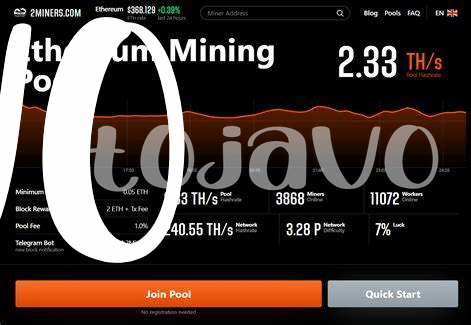What’s the Drill with Solo Mining? 🪓

Imagine you’re on a treasure hunt, all by yourself, with a map that promises riches untold. This is a bit like solo mining in the world of Ethereum. Solo mining is a solo adventure where you use your own equipment to solve complex problems, sort of like unlocking a very complicated lock to find hidden treasure. When you succeed, the rewards are all yours, no need to share with a team. However, finding that treasure is no small feat. It requires not only top-notch gear but also patience and a bit of luck. Just like in treasure hunting, not every expedition will lead you to gold. Sometimes, you might spend days, or even weeks, without finding that precious block that grants you Ethereum. But the allure of keeping the entire prize to oneself is tempting, making solo mining an enticing path for those who have the resources and the resilience to go it alone.
Here’s a simple breakdown of what you need to start solo mining:
| **Requirement** | **Description** |
|—————–|—————————————————–|
| Computing Power | A powerful computer, specifically a high-end GPU or ASIC miner. |
| Electricity | Access to affordable and reliable electricity. |
| Software | Mining software that allows you to connect to the Ethereum network. |
| Persistence | The willingness to continue mining despite not finding blocks for a period. |
Pool Mining: Many Hands Make Light Work? 🤝
Imagine you’re at a carnival trying to win a teddy bear. Going at it alone, you might spend ages trying to knock down those tricky bottles. But what if you had a group of friends? Each of you takes a turn, and when one finally wins, you all share the victory cheer (and the teddy bear, of course). This is what pool mining feels like in the Ethereum world. By joining forces with other miners, you create a powerhouse capable of solving complex puzzles much faster than going solo. It’s a collective effort where rewards are shared based on the work each miner contributes. This way, even though the prize is split, the chances of earning something are significantly higher and more consistent over time.
In this collective quest, miners pool their computing power to increase their odds of validating transactions and finding new blocks. When the pool succeeds, the reward is split among its members, proportional to the amount of work each miner contributed. It’s like having a slice of a bigger pie rather than waiting indefinitely for a whole one that might never come. This method is especially appealing in a landscape where mining difficulty has soared; standing alone with your gear might feel like bringing a knife to a gunfight. For more insights into the ever-changing world of mining, check out this detailed analysis at https://wikicrypto.news/ethereums-rollercoaster-what-the-current-value-tells-us. Here, you can dive deep into the prospects and strategies that shape the future of digital treasure hunting.
Breaking down the Earning: Solo Vs. Pool 📊

When it comes to earning from mining Ethereum, it’s like comparing a lone treasure hunter to a team of archaeologists. For a solo miner, stumbling upon a block is like finding a rare gem – immensely rewarding but highly unpredictable. The payout is substantial since they don’t have to share the loot, yet these striking moments happen less frequently. There’s a thrill in knowing that if you hit the jackpot, all that glitters is yours, but patience and deep pockets are prerequisites.
On the flip side, pool mining is akin to joining forces, where the rewards, though smaller per individual, are distributed more evenly among contributors. It’s a bit like splitting the bill at a group dinner; everyone gets a taste but doesn’t shoulder the cost alone. This approach significantly increases the chances of earning more consistent returns, albeit smaller ones. So, while the allure of a big solo win is tempting, the steady income from pool mining often makes for a safer bet in the unpredictable world of cryptocurrency mining. 🌐🔗📈
Calculating the Odds: Chances of Finding a Block 🔍

When embarking on the journey of mining Ethereum, understanding your odds of finding a block is like assessing your chances of striking gold in your backyard. In solo mining, the equation is pretty straightforward: it’s just you against the vast network. Your success hinges on the power of your mining rig compared to the entire Ethereum network’s combined computing power. Imagine trying to find a needle in a gigantic haystack, where the size of your magnet (mining rig) can vastly affect your chances of success. On the flip side, pool mining is like joining forces with a group of friends to find that needle. Everyone’s magnets are combined, significantly improving the chances of success; however, you’ll need to share any gold you find. Whether you go it alone or team up, leveraging the right tools can make all the difference. Speaking of tools, for those diving into litecoin mining, the journey involves understanding the dynamics of mining and using calculators to plot your course for the best returns. Navigating the mining landscape wisely, knowing when to join forces and when to venture solo, can turn the odds in your favor, making the quest for Ethereum not just a shot in the dark but a calculated exploration. 🚀🔍🛠️
Tools of the Trade: Required Equipment and Software 🛠️
Imagine venturing into the heart of a digital jungle, armed with nothing but your trusty computer and dreams of treasure. This is where the journey of mining Ethereum begins. To carve your path, you’ll need more than just an ordinary computer; think of it as needing a digital excavator. The trick isn’t only about having the most powerful hardware; it’s also about choosing the right software to steer through the blockchain soil. Graphics cards, or GPUs, are the pickaxes in this adventure, with miners opting for the most efficient ones they can lay their hands on – the stronger, the better.
Venturing further into this territory requires mapping tools and a compass, metaphorically speaking. This comes in the form of mining software, which connects your hardware to the Ethereum network. It’s like having a guide that whispers the network’s secrets, helping you find your way to the next block. While the hardware lays the physical foundation, software breathes life into your endeavor, making sense of complex calculations and guiding your efforts towards success. Here’s a quick glance at what you might need:
| Equipment | Software |
|---|---|
| High-performance GPUs | Mining apps |
| Reliable power supply | Blockchain network access |
| Effective cooling system | Security tools |
Risks and Rewards: Navigating the Mining Landscape 🚀

In the dynamic world of Ethereum mining, the journey between risk and reward is like navigating through a dense fog, only with the hope of emerging into a clearing bathed in sunshine. 🚀 For solo miners, the adventure is akin to embarking on a treasure hunt where the X marks a spot that keeps moving. The thrill lies in the possibility of striking it big, unearthing a block all by oneself, and claiming the entire reward. However, this path is fraught with pitfalls – significant upfront investment in high-powered equipment, continuous electricity consumption, and the ever-present specter of fruitless searches that yield no digital gold. On the flip side, pool mining offers safety in numbers. 🤝 It’s like joining forces with fellow treasure hunters to increase the chances of success. Although the booty is shared, reducing the size of the prize, regular payouts offer a steady stream of rewards. Yet, this alliance comes with its share of risks, such as pool fees and the reliance on the pool’s integrity and uptime.
For those pondering the odds and thinking about what tools they’ll need, keeping an eye on the ever-changing value of Ethereum is crucial. You can do so by checking the litecoin calculator, which gives you a snapshot of current prices, helping you make informed decisions. Remember, whether you choose to go solo or join a pool, understanding the risks and rewards is key to navigating the mining landscape. Choosing your path wisely can lead to a rewarding journey, but it’s essential to weigh the potential gains against the costs and challenges you’ll face. 🛠️
